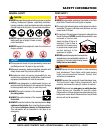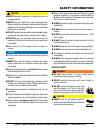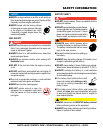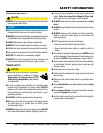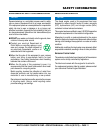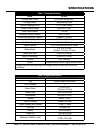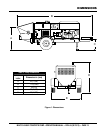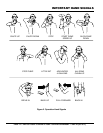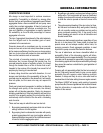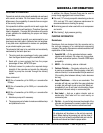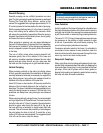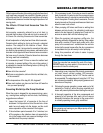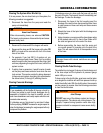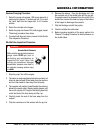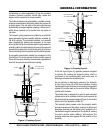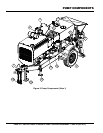
GENERAL INFORMATION
Mix design is most important to achieve maximum
pumpability. Pumpability is affected by, among other
factors, the type and gradation of aggregate used. Natural
aggregates make a more workable mix and pump more
readily than crushed aggregates. A blend of natural and
crushed aggregates will produce a workable mix. The
type and gradation of aggregates is equally important
for workability as the size and percentage of coarse
aggregates in the mix.
The term “aggregates” describes all of the solid materials,
from the largest rock to the smallest grain of sand,
contained in the concrete mix.
Concrete mixes with a consistency as dry as one-inch
slump and as wet as ten-inch slump have been pumped;
but for maximum efficiency from the pump, a slump ranging
from two to six inches will produce a more workable mix
than one that contains more or less water.
The principle of concrete pumping is based on self-
lubrication. As it moves through the transfer line, the
concrete takes the shape of a plastic cylinder. It is forced
through the transfer line on a film of mortar that is self-
troweled to the service of the transfer line around its full
periphery by the slug of concrete itself.
A slump rating should be used with discretion; it is not
always a real indication of the pumpability of the mix. The
concrete may be workable in the sense that it will readily
flow into place, but the same mix may not respond to
pressure.
Overly wet mixes tend to separate. In addition to affecting
the strength and quality of the concrete, the delivery
system will not tolerate separation. Overly dry mixes are
similarly unsatisfactory if they lack plasticity and tend to be
crumbly. To be properly pumped, the mix must be able to
continuously coat the inside of the line with a lubricating
seal of mortar.
There are four ways in which this seal can be lost:
1. By pumping excessively wet mixes which do not have
enough cohesion to hold together.
2. By pumping harsh undersanded concrete with poorly
graded aggregates which can jam together when the
pressure becomes too great for the insufficient amount
of sand to hold the aggregates apart.
3. By getting a rock pocket, such as mixer tailings, into the
pump valve. This rock pocket will have an insufficient
coating of mortar and the mix will not be plastic enough
to allow the valve to operate or the mix to move in the
line.
4. Through excessive bleeding. If the mix is short or fines,
but the sand is otherwise fairly well graded, bleeding
will not normally create any problems as long as the
pump continues operation. But, if the pump is shut
down, bleeding can result in a loss of lubrication and
blocked erratic flow.
The above are bad concrete practices, regardless of how
the mix is to be placed. But, these points do show that
special mixes are not always needed, within limits, for
pumping concrete. Good aggregate gradation is most
important to pump concrete the maximum distance.
The use of admixtures can have a beneficial effect on
pumpability. Most of the dispersing agents will fatten,
retard bleeding, and increase workability. Thus, the average
concrete can be pumped for appreciably longer distances.
Air entraining agents will also improve workability, although
they cannot be used as a substitute for good gradation of
the aggregate.
Pumping will not appreciably affect the final air content of
the mix. High-early cement tends to give a more readily
pumpable mix with superior water retaining qualities.
However, if delays are likely to occur, extra care must be
exercised due to the faster setting time over regular cement.
The Mayco LS600P will pump a wide variety of concrete
pump mixes. But, there are guidelines that must be followed.
Use this information in conjunction with the Operation
section of this manual.



